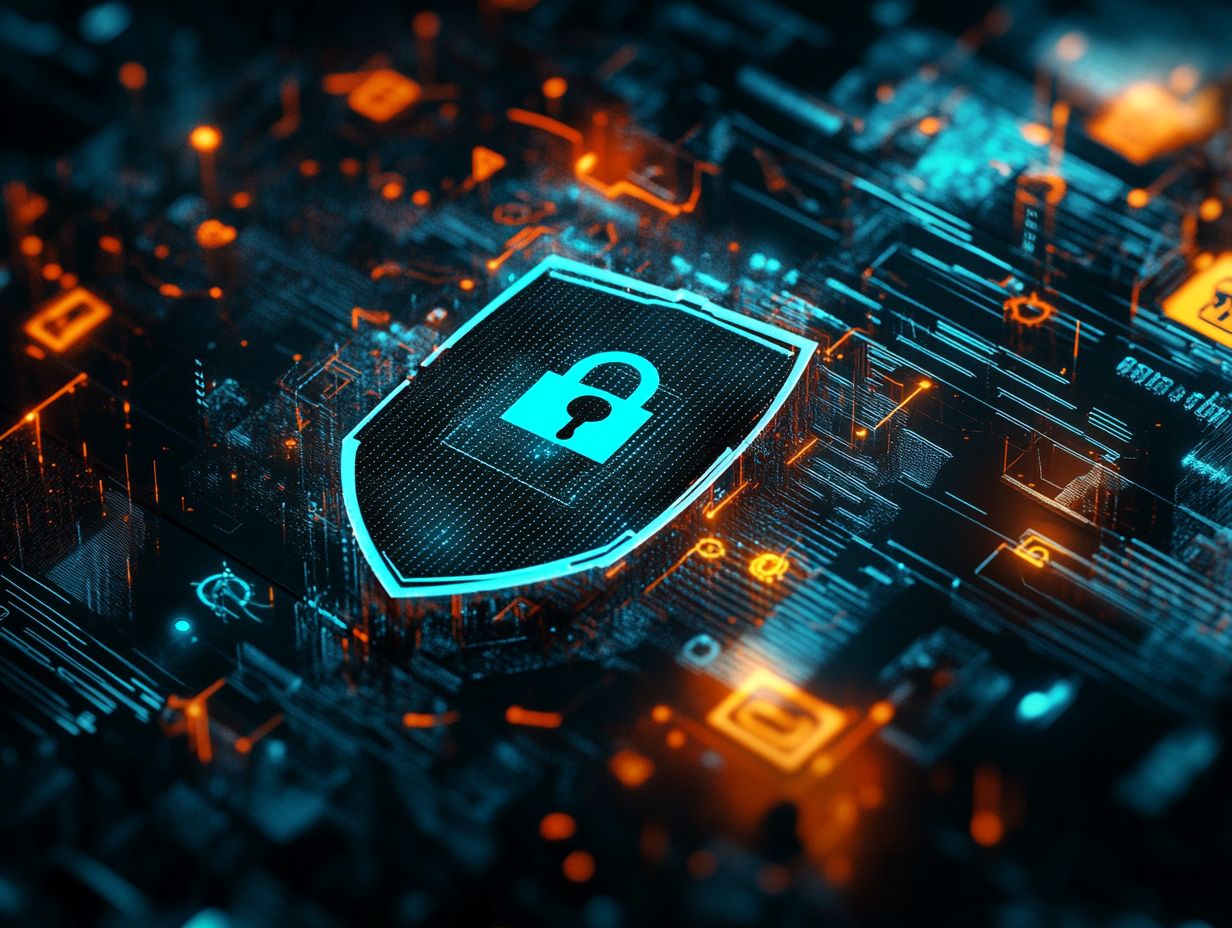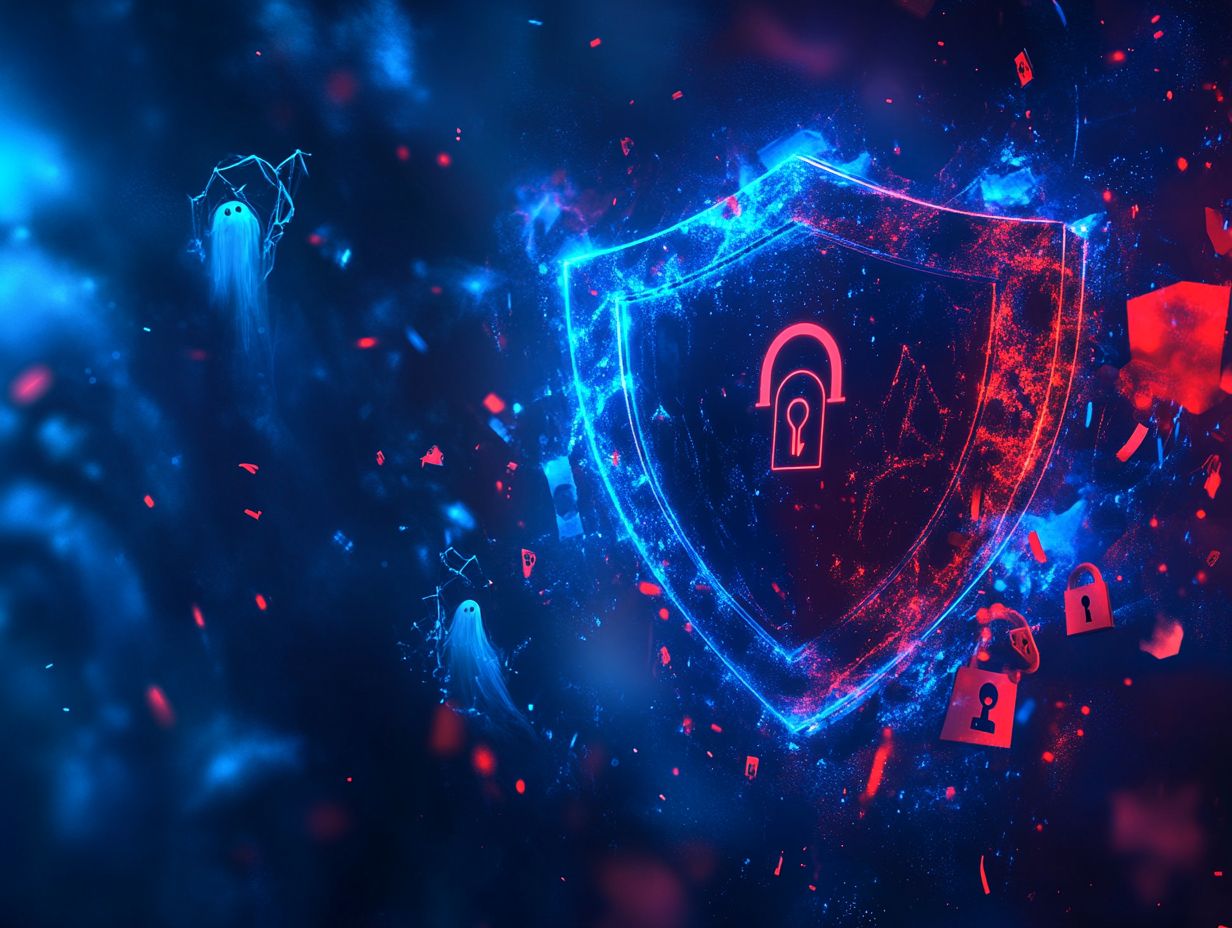what are cybersecurity myths?
In today s digital landscape, misinformation surrounding cybersecurity poses significant risks to both individuals and organizations.
Misconceptions about hackers and misunderstandings regarding data privacy are plentiful, creating a tangled web of myths.
This article aims to clarify common cybersecurity myths and dispel misconceptions that could leave you exposed.
It delves into the genuine threats lurking online while sharing best practices to help you protect your digital life.
Engage with us as we separate fact from fiction, enhancing your cybersecurity awareness and fortifying your defenses.
Contents
Key Takeaways:

Cybersecurity myths are false beliefs about online security. They can put everyone, including you, at risk. Common myths include thinking that strong passwords are enough to protect against cyber attacks or that only large businesses are targeted by hackers. In reality, cyber threats are constantly evolving, and anyone can be a target. Staying informed and following best practices, such as using reputable security software, is crucial for staying safe online.
Common Cybersecurity Myths
A plethora of myths circulates in the world of cybersecurity, frequently misleading small businesses and individuals about the genuine nature of cyber threats.
You might think that antivirus software alone can fully protect you from sophisticated cyber attacks. Perhaps you believe that using public Wi-Fi is perfectly safe as long as you take basic precautions, or that phishing emails are easy to spot.
These misconceptions not only endanger your personal data but also obstruct effective data protection measures.
To truly combat cybercrime, it s essential to debunk these myths and grasp the realities of cybersecurity. Understanding the vital roles of password managers and employee training in strengthening your overall security posture is crucial.
Debunking the Top Misconceptions

One of the most common misconceptions in cybersecurity is that strong passwords and multi-factor authentication are unnecessary for individual users, especially in small businesses. This belief can lead to serious issues. It weakens your digital security.
In fact, a 2021 report by Verizon reveals that a staggering 81% of breaches are tied to weak or stolen passwords. Even more concerning is a case study involving a small business known for its innovative services. Their disregard for these essential practices led to a significant data breach, compromising sensitive customer information and costing them over $500,000 in recovery expenses.
By underestimating the importance of secure credentials and robust authentication processes, organizations inadvertently place themselves at risk for insider threats and cyberattacks. This scenario underscores the urgent need for heightened cybersecurity awareness in today s digital landscape.
Real Threats in Cybersecurity
You must understand the real threats to protect yourself! Sophisticated cyber threats keep evolving and exploiting vulnerabilities.
From identity-based attacks that specifically target personal information to a method where attackers use stolen usernames and passwords to access multiple accounts, cybercrime comes in many forms and is constantly increasing. Malware continues to pose a significant threat, with its ability to infiltrate IT systems and trigger severe security breaches.
This reality shows that you must act now to safeguard your information. Implement robust security measures and adopt proactive risk management strategies to mitigate potential damages effectively.
Understanding the Actual Risks

Understanding the real risks in cybersecurity requires a thorough approach. This includes testing your security by simulating attacks and regularly checking for weaknesses.
By employing various methods, you can see a clearer picture of your security. Penetration testing helps you find vulnerabilities before attackers can exploit them.
Security audits carefully evaluate your current protocols. They ensure you meet industry standards and highlight areas for improvement.
Using advanced tools like intrusion detection systems boosts your ability to find online fraud. Together, these strategies strengthen your defenses and empower you to combat cyber threats actively.
How to Protect Yourself from Cybersecurity Threats
To shield yourself from cybersecurity threats, use a strong set of security measures. Start with employee training and robust mobile device management.
Backing up your data regularly is essential. Also, prioritize using a virtual private network (VPN) for secure connections, especially on public Wi-Fi.
By building a culture of cybersecurity awareness, you significantly lower the risks to your data and improve your security.
Best Practices for Staying Safe Online

Adopting best practices for staying safe online is vital today. Using antivirus software and effective email filtering are foundational steps.
Your organization should weave risk management strategies into your security efforts. Regular software updates and maintaining backups are key to preventing ransomware attacks.
Educate yourself and your team about phishing tactics. Many security breaches occur from misguided clicks on deceptive emails.
Using a multi-factor authentication system adds an extra layer of security. It makes unauthorized access much harder.
Myth vs Reality: The Truth About Cybersecurity
In cybersecurity, knowing the difference between myth and reality is essential. Businesses face rising insider risks and serious data breach threats.
Some organizations believe that simply following basic security policies is enough. However, strong cybersecurity training and regular updates to security protocols are critical.
Separating Fact from Fiction
Separar los hechos de la ficci n en seguridad en l nea requiere comprender las herramientas disponibles para combatir el fraude en l nea.
Esto implica explorar diferentes tecnolog as avanzadas, como la encriptaci n, un m todo que convierte la informaci n en un c digo para protegerla, la autenticaci n multifactor y los sistemas de detecci n de amenazas con inteligencia artificial.
Al usar estas soluciones innovadoras, puedes crear defensas s lidas contra amenazas cibern ticas. Las auditor as de seguridad frecuentes y el uso de firewalls aumentan tu protecci n general.
Comprender estas herramientas te empodera para tomar decisiones informadas y asegurar que tu informaci n financiera est protegida.
En este sentido, estar consciente y educarse sobre seguridad en l nea son activos vitales para tu bienestar financiero.
Frequently Asked Questions
What are cybersecurity myths? Cybersecurity myths are false beliefs about online security. They can create a false sense of safety and lead to poor protection against cyber threats.
Are all cybersecurity myths harmful? Not all myths are harmful. Some are outdated, but others can seriously jeopardize your security if believed.
Why do cybersecurity myths exist? These myths often arise from a lack of understanding about the evolving nature of cyber threats and misinformation.
What are some common cybersecurity myths? Common myths include the idea that only large companies are targeted and that Mac computers are immune to viruses.
How can believing in cybersecurity myths put me at risk? These beliefs can make you underestimate the need for proper security measures, making you an easier target for cyber criminals.
How can I avoid falling for cybersecurity myths? Stay informed about cybersecurity developments. Always verify information from credible sources and update your security measures regularly.






